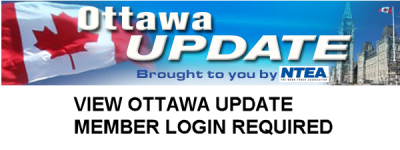
Canada and the United States have a special bond, forged by shared geography, values, and interests, as well as multi-layered economic ties. Our two countries share one of the largest trading relationships in the world, with over $1 trillion in bilateral trade in goods and services in 2021. The trade and investment relationships is built upon long-standing, bi-national supply chains.
Many Canadians and Americans have family and friends on either side of the border. It is estimated that nearly 400,000 people cross the Canada-U.S. border each day (pre-pandemic). About 20% of Canada’s gross domestic product comes from goods exported to the U.S., while Canada is the top export destination for 35 U.S. states.
The North American vocational truck industry is a good example of the interconnected nature of the two economies. Each day, companies of all sizes in the work truck industry are moving people, parts, and products across the border in both directions. Many have operations in both countries. Strong North American integration helps companies compete in the global marketplace.
NTEA plays a pivotal role in educating decision-makers about the North American work truck industry and advocating for harmonized standards between the United States and Canada. Both governments have been open to hearing work truck industry interests and concerns.
Key policy areas where NTEA advocates for harmonization and alignment include motor vehicle safety, vehicle and engine greenhouse gas (GHG) emission regulations, effective implementation of the United States-Mexico-Canada Agreement (USMCA) and other trade and investment agreements, tax, and border policies and procedures.
U.S.-Canada trade has long been governed by a succession of free trade agreements, the most recent of which is the United States-Canada-Mexico Agreement or USMCA, known as CUSMA in Canada. The Agreement is creating more balanced, reciprocal trade supporting high-paying jobs for Americans and Canadians and growth of the North American economy. The USMCA is up for review in July 2026, and NTEA supports the continuation of the Agreement as a framework to govern trade and investment in the region.
As new issues emerge, NTEA is there to represent the industry. The Association is actively involved in policy processes related to the development of zero-emission vehicle (ZEV) mandates and standards by national and sub-national governments. This requires working closely with government officials, as well as a broader network of key stakeholders, including other segments of the transportation industry, academia and non-governmental organizations (NGOs).
If you're not yet a member, it's easy to join online or contact us info@ntea.com or 248-489-7090.
Key resources
- Canada Regulatory Compliance Guide – An essential resource for producing commercial vehicles for the Canadian market
- Commercial Vehicle Certification Guide – Captures the latest regulatory information in the U.S. and Canada
- F/CMVSS Manual and Kit – Includes conformance mandates that took effect in Canada in 2019
- Ottawa Update e-newsletter – Features the latest news affecting the work truck industry in Canada
- U.S./Canada Federal Lighting Guide – Provides illustrations indicating specific lighting requirements for commercial vehicles